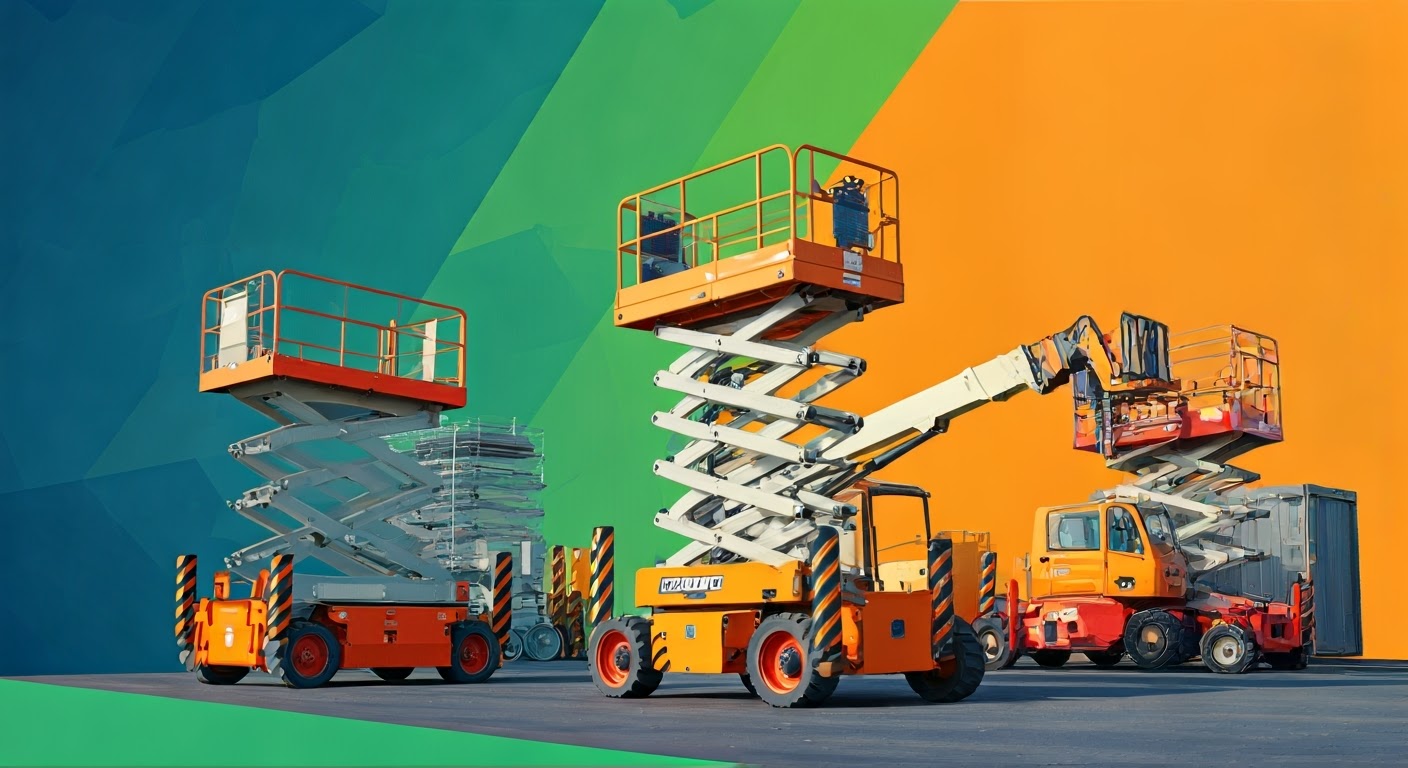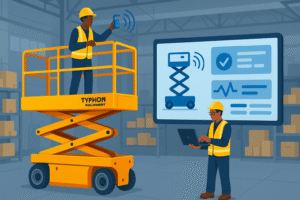How Does a Scissor Lift Work?
Scissor lifts are used in moving up and down by cross balance supports. The principle of the way moving the lift up and down is related to its power source. Hydraulics, diesel, and electricity are the main ways scissor lifts are powered. Scissor lifts are most commonly used for repairing buildings and also for reaching materials stored high and out of reach in warehouses. Generally, we know what they are doing, but How Does a Scissor Lift Work? is still a mystery to many.
Read through our guide below on the different parts of the lift’s, how its power sources affect the lifting mechanism, and how operators keep safe on a scissor lift.
Parts of a Scissor Lift
First, you need to acquaint yourself with the scissor lift parts in order to figure out how it operates. We will provide a detailed guide on the basic scissor lift part below.
- Platform: These are of varied shapes, sizes, and densities and depend on the model. Platforms that have rails usually are for people to be transported, and those that are free of any railings are for transporting materials. The platform is also called a “lift table.”
- Base: By the same token, the size of the base is also different depending on the model. Base is the foundation on which the lift is placed and is very solid. It has tracks on it to guide the rollers at the bottom of the scissor legs. These, together with a strong foundation, make sure the up and down motion stays consistent and steady.
- Scissor legs: The legs are the parts that go from the base to the platform. So as the legs narrow, the platform rises and as the legs widen the platform falls. The legs are in a pantograph or criss-cross pattern.
- Cylinder(s): A scissor lift will usually have either one or more cylinders attached to it. The type of cylinder used on a scissor lift depends on the scissor lift type. For instance, hydraulic scissor lifts run on a cylinder containing hydraulic fluid, whereas a pneumatic pump type runs on a cylinder that is filled with compressed air.
- Power source: The power source could be either a self-contained motor or a remote power pack. There are several ways in which a scissor lift is powered than the ones we will mention power sources in the others.
- Down valve: This valve is controlled by a solenoid to direct the compressed air or the hydraulic fluid either to the extend or to the return part of the cylinder. This, in turn, ensures that the scissor lift doesn’t speed down. The down valve won’t be on working mode until the power source kicks into action.
- Flow control valve: This valve is responsible for controlling the horizontal ring of the platform by allowing the fluid to move at various rates.
How a Scissor Lift Works
The working of a scissor lift will be varied according to the power source it uses, but the motion will be the same.
The process how a scissor lift works is as follows:
- The power source is switched on and the cylinder(s) are filled with hydraulic fluid or compressed air.
- Hydraulic fluid or compressed air is displaced from one area to another.
- The cylinder is pushed outside this movement then manages to split the legs.
- The elevation of the platform is laid up.
If the operator wants to lower the scissor lift they will release the pressure or the fluid of the scissor lift to start the mentioned process in the opposite direction and make the descent.
The rate of descent is related to the force provided by the scissor lift and the weight of the load. In situations where you are going to deal with heavy materials, it would be best to purchase a scissor lift that has a more powerful engine. For instance, the weight of the object affects the performance of the engine to push the liquid or air against the cylinder to get it out.
How Scissor Lifts are Powered
There are many types of scissor lifts that you can use which are mainly different in the power source they are operated by. The following are the power sources for scissor lifts.
- Hydraulics: A hydraulic scissor lift uses a hydraulic liquid in the cylinders in order to lift the cars. The maintenance cost is low, but most of the time they do not support the training of pilots. They are appropriate for individual assignments that are not largely focused on speed or hp such as smaller projects.
- Pneumatic: Pneumatic scissor lifts operate on air pressure and are moved by raising and lowering the scissor lift. These units generate no pollutants and are therefore sustainable products. However, they are less forceful compared to others. Correspondingly, they are perfect for apartments and small constructions.
- Diesel: Diesel-powered scissor lifts are equipped with a diesel fuel system. They are capable of performing heavy tasks and feature a high platform. Nevertheless, they are suitable for a big area outside or in areas with proper ventilation because of the fumes that they produce and also the noise can be very loud. Although electric lift is a little bit expensive, it is a good option for indoor use.
- Electric: Electric scissor lifts are equipped with a supply of electric current and rather work without vibration. They are not noisy, do not produce exhaust gases, and most importantly, the short but strong scissor lifts are very practical in this case. They can be used in small areas where space is restricted.
- Conduct a pre-operation safety check to make sure everything works well including the brakes and the emergency stop button.
- Ensure that all workers have received training and that they are familiar with the scissor lift for the day.
- Clear the surrounding area from the potential danger factor.
Scissor lifts are great for such cases.Climbing on a ladder in a crowded area is risky especially when aiming for a higher level of accomplishments and progress. Check our main menu to find out the situation that is most effective for your project.




